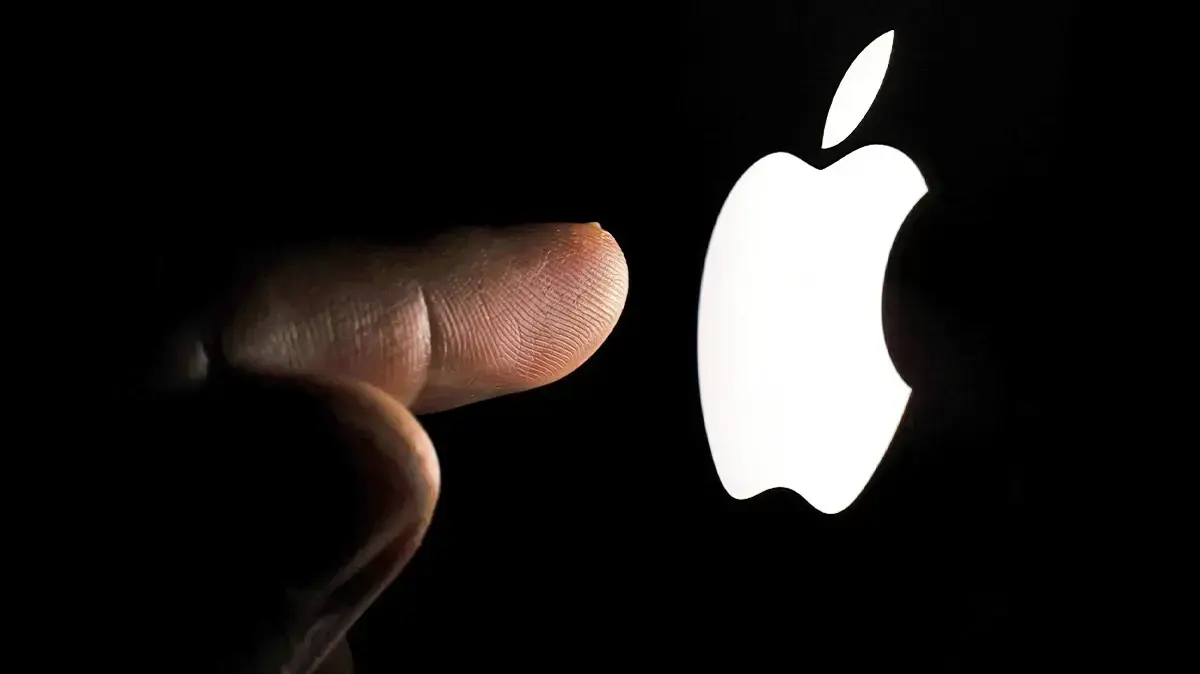Icon: enlarge
The Graphite iPhone app on a new MacBook Pro
Photo: Matthias Kremp / DER SPIEGEL
Granted, the new Apple Watches, iPads, medium, small and large iPhones and HomePods were all very nice, but Apple had saved its most interesting novelty for the third of its fall events, the M1 processor.
You can read here what exactly this new microchip is all about.
Now the question is whether it will keep what the manufacturer promises in practice.
To find out, I've been testing the new MacBook Pro in 13-inch format for almost a week, which looks exactly like its predecessor with an Intel processor, but is equipped with the new Apple chip instead.
What strikes me is that when I open it, it is instantly ready for use, just like an iPhone is instantly "there" when you press the power button in standby.
A 16-inch MacBook Pro tested for comparison - Apple's top notebook - takes around two seconds.
The difference is palpable.
What you can feel there is the proximity of the new Apple notebooks to the iPads and iPhones.
The M1 chip in my test device is a drilled out version of the chips that the company has been installing in its iPhones and iPads for a good decade.
When presenting the M1 and the new MacBooks, Apple didn't save on superlatives: the processor is up to three and a half times faster, the graphics up to six times faster, and tasks based on machine learning, such as facial recognition, are up to 15 times faster.
What is only in the small print: As a reference for this information, Apple has chosen the smallest model of the respective series, i.e. the Mac Mini with a slow Core i3 processor, the MacBook Air in the minimal version and an inexpensive MacBook Pro with an Intel processor.
The M1 really is that fast
You can do that.
Especially since the model that I have been testing is the cheapest of its series with a price of 1412.45 euros.
But the question seems much more exciting to me: If the new models with the M1 are so much faster than the old ones, how do they compare against a high-end MacBook with an Intel processor?
So I put my test device up against the 16-inch model from last year, equipped with a 2.4 GHz Core i9 processor and 32 gigabytes of RAM.
List price around 4000 euros.
I ran a number of test programs on both computers: Geekbench 5, Cinebench R23, various browser tests and even the 3DMark Sling Shot Benchmark, which was actually developed for iPhones and iPads.
But that is also one of the goodies that the M1 chip brings with it: All of a sudden you can use iPhone and iPad apps on the MacBook.
More on that later.
Icon: enlarge
Like all Apple apps, the Logic Pro X music software also benefits a lot from the M1 because it has already been adapted to the new chip
Photo: Matthias Kremp / DER SPIEGEL
The result: In all tests that only load one of the eight processor cores of the M1, the new MacBook Pro is 25 to 45 percent faster than the 16-inch MacBook, which is twice as expensive, and according to Geekbench even the fastest Mac ever.
The results look a little different when testing multicore applications that put a load on all of the chip's computing cores.
The new MacBook and the old high-end model are roughly on par here.
In terms of graphics performance, the MacBook with the M1 chip achieved four times higher values than the model with Intel chips.
In addition, to test machine learning performance, I got a pre-release version of the Pixelmator Pro 2.0 graphics program.
The software, which has already been optimized for Apple's new hardware, has a function called "ML Super Resolution" that relies on machine learning when it artificially increases the resolution of photos, for example in order to greatly enlarge low-resolution images.
The result: it took Pixelmator Pro 15 seconds on the new MacBook Pro and 24 seconds on the 16-inch MacBook Pro to process a vacation photo with “ML Super Resolution”.
How long does it last?
The M1 chip is clearly more powerful, that much is clear.
But what about endurance?
To check this, for the first time I let a notebook go through the same endurance test that I use to abuse smartphones and tablets, playing a Full HD film in an endless loop.
Apple promises a runtime of up to 20 hours for this scenario.
After the first round - my test video has around two hours of playing time - I was afraid I would actually have to wait that long, the battery indicator was still at 97 percent.
Icon: enlarge
If you want to have it easy on the go, you can also take the small iPhone plug with you to charge the MacBook instead of the large power adapter supplied
Photo: Matthias Kremp / DER SPIEGEL
The MacBook didn't last that long after all, it shut down after 16 hours.
The fact that Apple's 20-hour goal was not achieved may at least partly be due to the fact that I played the film on the VLC player, which is not yet adapted to the M1.
The app must therefore run in Rosetta 2, software that translates software written for Intel processors for the M1 chip, which requires additional computing power and thus energy.
iPhone apps on Mac
The fact that the VLC player runs so smoothly on the new computer is basically an achievement in itself.
All of the programs that were not optimized for the M1 and that I tried on the new MacBook worked without any problems and without any loss of performance.
The game "Cities Skylines" ran even more smoothly than on the big MacBook.
However, some professional apps such as the Adobe Premiere video program are likely to be faster on Intel Macs until they have also been adapted to the M1.
display
New Apple MacBook Pro with Apple M1 Chip (13 ", 8 GB RAM, 256 GB SSD) - Space Gray (newest model)
From € 1,412.45
Price query time
11/17/2020 3:22 p.m.
No guarantee
Icon: Info
Order at AmazonIcon: amazon
Product reviews are purely editorial and independent.
Via the so-called affiliate links above, we usually receive a commission from the dealer when making a purchase.
More information here
It is particularly interesting that you can also use iPhone and iPad apps on Macs with an M1 chip, which can be easily downloaded from the App Store on the Mac.
They don't even have to be adjusted for this.
Some apps are missing because developers have the option to exclude their apps from the Mac App Store.
A quick tour of the offer shows that some have made use of it.
Conclusion
👍🏻 Very high performance
👍🏻 Very great endurance
👍🏻 Very good screen
👍🏻 Good equipment
👎 Memory cannot be expanded
👎 Few connections
The new MacBook Pro is like a VW Beetle with a Porsche engine: you are surprised when it overtakes you.
But that is exactly what has just happened: My 1400 euro test device casually showed the rear lights of the 4000 euro MacBook from 2019.
The leap in performance is enormous, especially if you use software adapted to the M1 chip, such as Logic ProX and Final Cut Pro.
And the endurance is also impressive.
In the seven days that I have been able to test the new model so far, I only had to plug it into the socket three times, despite intensive use.
One of these before and after the battery test.
Nevertheless, Apple has to put up with two points of criticism: Only two Thunderbolt ports and a maximum of 16 gigabytes of RAM should not be enough for professionals who deal with image processing and video editing.
I'm curious what Apple will come up with for this clientele.
In any case, the M1 chip should only be the beginning.
Icon: The mirror
Background: Product tests in the Netzwelt department
Which products are reported in the Netzwelt section? Up arrow Down arrow
We decide for ourselves which products we report in the Internet world and which we test or not. We do not receive any money or other consideration from the manufacturer for any of the test reports.
For various reasons it can happen that we do not report on products, although we have corresponding test products.
Where do the test products come from? Up arrow Down arrow
We usually get test devices and review copies of games from the manufacturer free of charge for a certain period of time, sometimes even before the official release.
In this way, our test reports can appear in good time or shortly after the product is published.
We only test pre-release versions or devices from pre-series production in special cases.
We usually wait until we can get test devices or game versions that are identical to the retail versions.
In some cases, we also buy products ourselves at our own expense if they are already available in stores or online.
Can the Netzwelt editors keep the products? Up arrow Down arrow
Usually, test devices are sent back to the manufacturer after the end of the test.
The exception are review copies of games and so-called permanent loans: For example, we have game consoles and smartphones in the editorial office that we are allowed to use for a longer period of time.
For example, we can report on software updates, new accessories and new games or make long-term judgments.
Do companies invite Netzwelt editors to travel? Up arrow Down arrow
DER SPIEGEL always bears the costs for travel to events, regardless of whether they take place in Germany or abroad. This also applies if, for example, a company takes over travel planning due to short-term appointments.
Events to which we travel at our own expense include the Ifa, CES, E3 and Gamescom trade fairs as well as events from companies such as Apple, Google, Microsoft or Nintendo.
At conferences like the Chaos Communication Congress or the re: publica, like other press representatives, we usually get free press tickets because we report on the conference and are not traditional participants.
What about the Amazon ads in some articles? Up arrow Down arrow
Since December 2016, there have been Amazon ads in some Netzwelt articles that contain so-called partner links.
If a user visits Amazon via such a link and buys online there, DER SPIEGEL receives a share of the sales in the form of a commission.
The ads appear in articles regardless of whether a product test is positive or negative.








